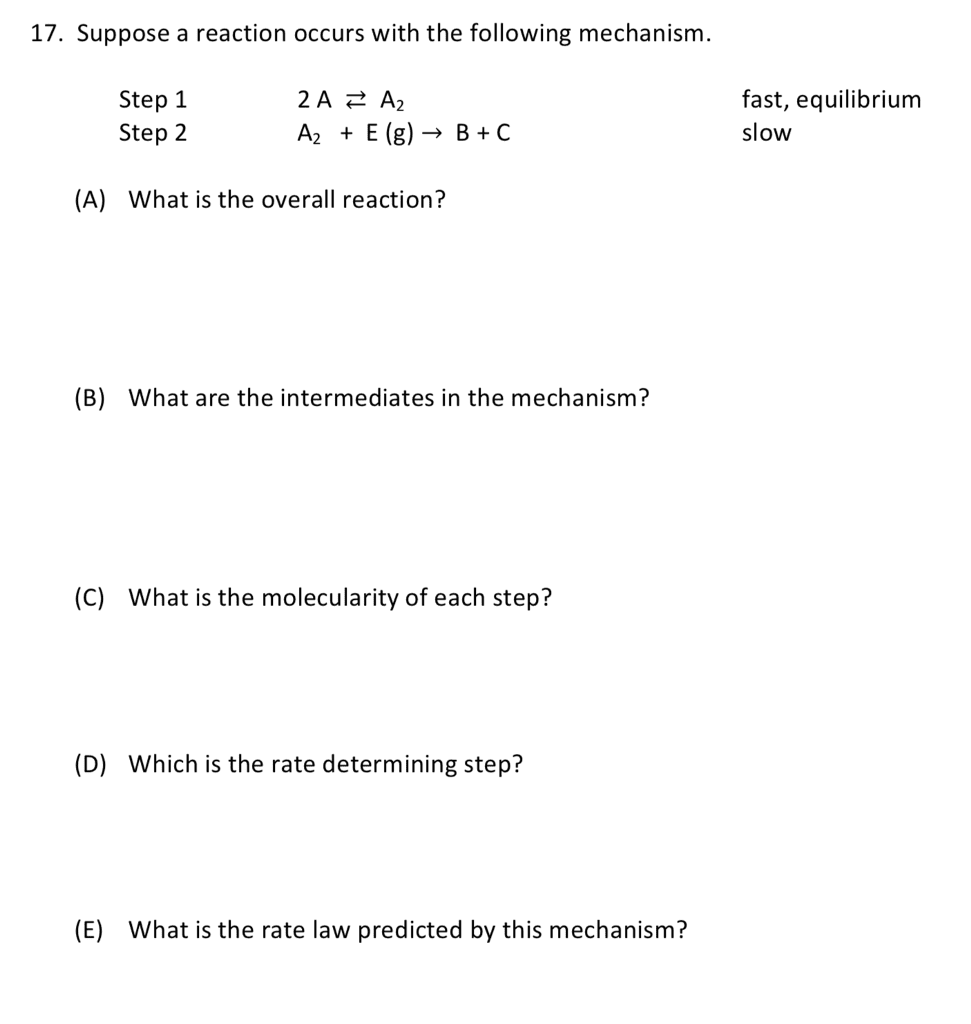Consider the reaction:
Consider the fictional reaction:
A + B â F + G
which is catalyzed by reagent C.
The rate of this reaction was monitored by looking at the disappearance of B under several different experimental setups at 298 K.
Experiment [A]
(M) [B]
(M) [C]
(M) Rate of disappearance of B
(M/s) 1 0.300 0.0500 0.100 0.000107
2 0.400 0.0500 0.200 0.000286
3 0.400 0.0500 0.0500 7.14e-05
4 0.300 0.0500 0.0500 5.36e-05
5 0.300 0.100 0.0500 5.36e-05
Step 1: A + C â D
Step 2: D â E + C
Step 3: E + B â F + G
Given the previous information, which of the following situations would lead to a plausible reaction mechanism?
Incorrect Step 2 as the rate determining step. All other steps fast steps.
Incorrect Step 3 as the rate determining step. All other steps fast steps.
Incorrect Step 3 as the rate determining step. Step 2 is a fast equilibrium step while step 1 is a fast step.
Correct: Step 2 as the rate determining step. Step 1 is a fast equilibrium step while step 3 is a fast step.
How is this the answer and how is the fast equilibrium step determined???
Consider the reaction:
Consider the fictional reaction:
A + B â F + G
which is catalyzed by reagent C.
The rate of this reaction was monitored by looking at the disappearance of B under several different experimental setups at 298 K.
| Experiment | [A] (M) | [B] (M) | [C] (M) | Rate of disappearance of B (M/s) |
|---|---|---|---|---|
| 1 | 0.300 | 0.0500 | 0.100 | 0.000107 |
| 2 | 0.400 | 0.0500 | 0.200 | 0.000286 |
| 3 | 0.400 | 0.0500 | 0.0500 | 7.14e-05 |
| 4 | 0.300 | 0.0500 | 0.0500 | 5.36e-05 |
| 5 | 0.300 | 0.100 | 0.0500 | 5.36e-05 |
Step 1: A + C â D
Step 2: D â E + C
Step 3: E + B â F + G
Given the previous information, which of the following situations would lead to a plausible reaction mechanism?
Incorrect Step 2 as the rate determining step. All other steps fast steps.
Incorrect Step 3 as the rate determining step. All other steps fast steps.
Incorrect Step 3 as the rate determining step. Step 2 is a fast equilibrium step while step 1 is a fast step.
Correct: Step 2 as the rate determining step. Step 1 is a fast equilibrium step while step 3 is a fast step.
How is this the answer and how is the fast equilibrium step determined???


